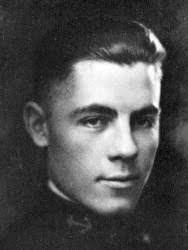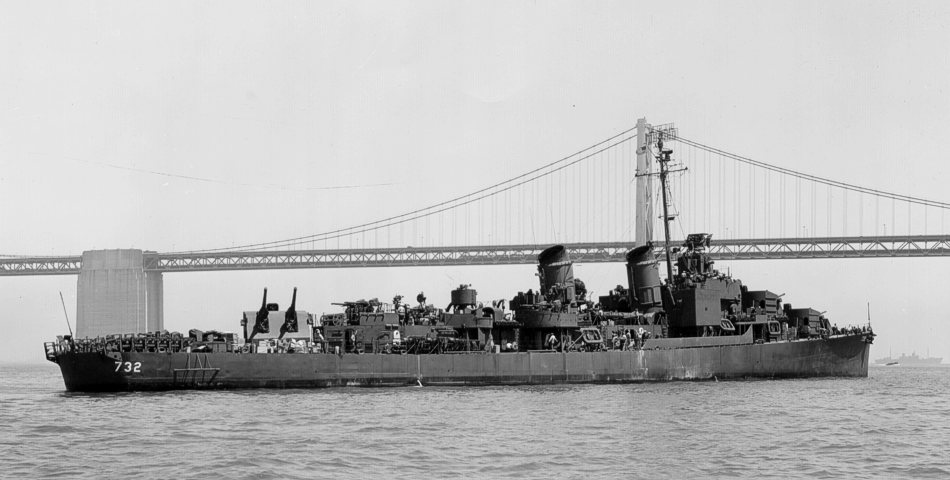Willford Milton Hyman was born on 16 August 1901 in Pueblo, Colorado.
He graduated from the United States Naval Academy in 1924. He first served on the battleship USS New Mexico and in the years before World War II, was assigned to many ships and a variety of shore stations, including the Office of Naval Operations. He assumed command of destroyer USS Sims on 6 October 1941. After convoy escort duty in the Atlantic, the USS Sims moved to the Pacific in early 1942.
In May, as the Japanese attempted to extend their conquest to Port Moresby, the ship was operating with oiler USS Neosho in a fueling group for Admiral Frank Jack Fletcher's aircraft carriers. While the carrier fleets maneuvered for position, Japanese planes found Neosho and Sims in the Coral Sea; and, thinking they were a carrier and escort, they attacked in strength. After Lieutenant Commander Hyman fought his ship through 2 air raids, 36 Japanese planes attacked the 2 ships. The USS Sims took three 500-lb. bomb hits in this third attack. From the time the first bomb that hit the USS Sims had exploded to the time she was sunk was a total of 48 seconds, leaving only 13 survivors. Realizing that the destroyer was damaged beyond repair, Hyman ordered "abandon ship" but remained on the bridge, directing the evacuation until going down with his ship. The sacrifice of his ship and Neosho had much to do with saving the Navy's carriers in the widely separated engagements known as the Battle of the Coral Sea. He was posthumously awarded the Navy Cross.
Construction began on the USS Hyman by Bath Iron Works, Bath, Maine on November 22, 1943, the ship was launched on April 8, 1944 and commissioned on June 16, 1944.
The USS Hyman conducted exhaustive shakedown training off Bermuda and in Casco Bay, Maine, before sailing from Boston on September 18, 1944 to join the Pacific war. Philip H. Prince's brother, Hugh Palmer Prince, was part of the ship's crew. Philip had just missed seeing his brother prior to their departure. The USS Hyman steamed via the Panama Canal Zone and San Diego to Pearl Harbor on October 12, 1944. During the next few months she was occupied with training exercises, including practice amphibious assaults, and escort voyages to the advance base at Eniwetok.
When the island of Iwo Jima became a prime objective, the USS Hyman set sail on January 27, 1945, with the transports of Kelly Turner's expeditionary force, touching at Eniwetok before carrying out on Saipan a final rehearsal of the Iwo Jima landing. On the morning of 19 February, the destroyer formed part of the screen for the transports; and, as the first wave landed, she turned her 5-inch guns shoreward and opened fire to provide support for the assaulting troops. She bombarded Japanese troops and bunkers until February 23rd, when she made an antisubmarine sweep south of Iwo Jima. The next day, after returning to gunfire support station, the USS Hyman fought off an air attack. Fire support and other duties continued until the destroyer sailed for Leyte Gulf on March 2, 1945. There she took part in practice bombardments for the upcoming invasion of Okinawa.
USS Hyman in San Francisco Bay, 20 July 1945.
Hyman sailed with Admiral Hall's Southern Attack Force 27 March 1945 and arrived in Okinawa 1 April.





No comments:
Post a Comment